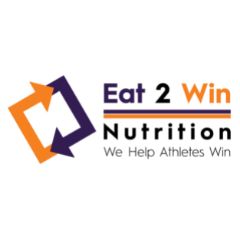Exercise Induced Muscle Damage: Etiology and Nutritional Strategies to Consider
Q&A for Session #1
Sports Nutrition Symposium 3.0
Monday June 21st, 2021 @ 12 pm CST
What is it? What causes it and what are the practical solutions. This talk will explore what Exercise Induced Muscle Damage (EIMD) is, it's causes and some practical nutritional solutions to mitigate the symptoms of EIMD.
All live sessions are free to attend. If you want lifetime access to the sessions from Sports Nutrition Symposium 1.0, 2.0 and 3.0 then check out the VIP Pass!
- Which amino acids in particular help attenuate DOMS?
- No knowledge on what specific Amino acids. Most studies look a them as a whole
- How might inadequate sleep affect protein synthesis/degradation? Are effects the same regardless of whether sleep is 1-2 hrs less than the suggested 7-8 hrs or if it’s 4-5 hrs less?
- No great deal of literature on this but obviously sleep is very important for adequate recovery. Do whatever we can to maximize sleep. Will definitely have an effect because a lot happens (i.e. protein synthesis) when we sleep.
- Does time sitting affect EIMD and recovery?
- Athletes tend to stiffen up more the more they sit. Try to have active recovery on recovery days (massages, hydrotherapy etc.).
- Are nitrates, bromelaine or citrulline useful in reducing EIMD?
- Not to knowledge. Nitrgoren improves oxygen kinetics but no real data.
- How might different stages of life impact how nutrition can be used for EIMD? For example when a female is in later stages of development vs when that female is pregnant/postpartum vs when that female is post menopausal?
- Probably increased requirements for pregnant and post-partum women but no data yet. Later stages in life have anabolic resistance and digestion is impaired so increased requirements for protein is needed. Active individuals in later life should reach 1.8-2g/kg of protein/day.
- How much did RMR increase on the recovery days and how much extra carbohydrates is recommended for the increase RMR on the recovery days?
- Variable. There are a few 100 calories different and also carbohydrate intake is much different. Recommendation should be how we fuel a normal training day, rest day and competition day. Carbohydrates should be kept high on all these days. 5-7g/kg might be required for some athletes. We thought in the past on recovery days we can go down to 3g/kg but new data suggests otherwise.
- In your opinion, it plausible for us to achieve enough of a boost in Vit D status through food sources to see recovery benefits?
- No- this is because this is not a nutritional problem but an environmental problem. We are only getting a maximum of a few hunred IUs of vitamin D from food.
- How often should we monitor vitamin D levels?
- It can be costly so depends on budget. If you can, monthly is good through the winter or at least beginning, middle and end of winter is beneficial. You don't want to blindly supplement individuals and athletes also might not be compliant with supplementation so recommends beginning, middle and end of winter at least.
- How would you recommend athletic individuals balance endurance and resistance training to allow for optimum recovery without leaving too long between training sessions? More & more individuals are looking to balance triathlon-like training that they've taken up over lockdowns with heavy lifting now that gyms have opened?
- If athletes can recover and fuel appropriately, its not a concern of what order they do it in.
- What does the data say on creatine and EIMD? Is it a worthwhile strategy for MMA athletes? who often experience a very high level of muscle soreness and damage?
- A little bit of literature exists and there's also some theoretical evidence to suggest creatine does improve the recovery phase from some molecular events (recruitment and activation of satellite cells) seems to improve with creatine supplementation. You would probably use creatine with an MMA type athlete to enhance the training program adaptation and this MAY also attenuate muscle soreness but it is a lower ranked priority for DOMS.
- Hi Dan, Heidi Strickler here. It has been my understanding that we want to limit fats in the immediate recovery window as they slow the absorption of other critical nutrients. Considering the role of n-3 compounds, and in looking at some of the recipes you provided at the end of the presentation, is this still the recommendation?
- The recipes provided at the end of the presentation are not particularly high fat but the protein sources are high in PUFA. Priority is making sure to maximize macro intake in immediate recovery phase. Making sure the athletes actually enjoy and eat these meals are a priority. Macro mix is the key thing here.
- Where would you draw the line on the tart cherry when walking the line of adaptation and recovery. How much is too much? Would you solely use it in season/competition?
- Don't know where the line is because not many studies. Use it where recovery needs a quick turn around.
- What is your take on continuous omega-3 and/or polyphenol intake blunting training adaptations?
- You can't really blunt training adaptation with omega-3. We dont see a high proportion of athletes meeting Omega-3 intake. Polyphenol from the diet is of low concern, has more health benefits and no data to suggest it might blind training adaptation. Careful with supplementations though. From the benefits, you are not going to attenuate any adaptations.
- Does history of injury from sport increase likelihood of EMID?
- Potentially- not much evidence out there. repeated bouts are actually protective so might be less likely to get EMID.
- Does Magnesium supplementation help with muscle recovery/soreness/EIMD? And which type of magnesium should be used?
- Not a great deal of research.



Facebook comments